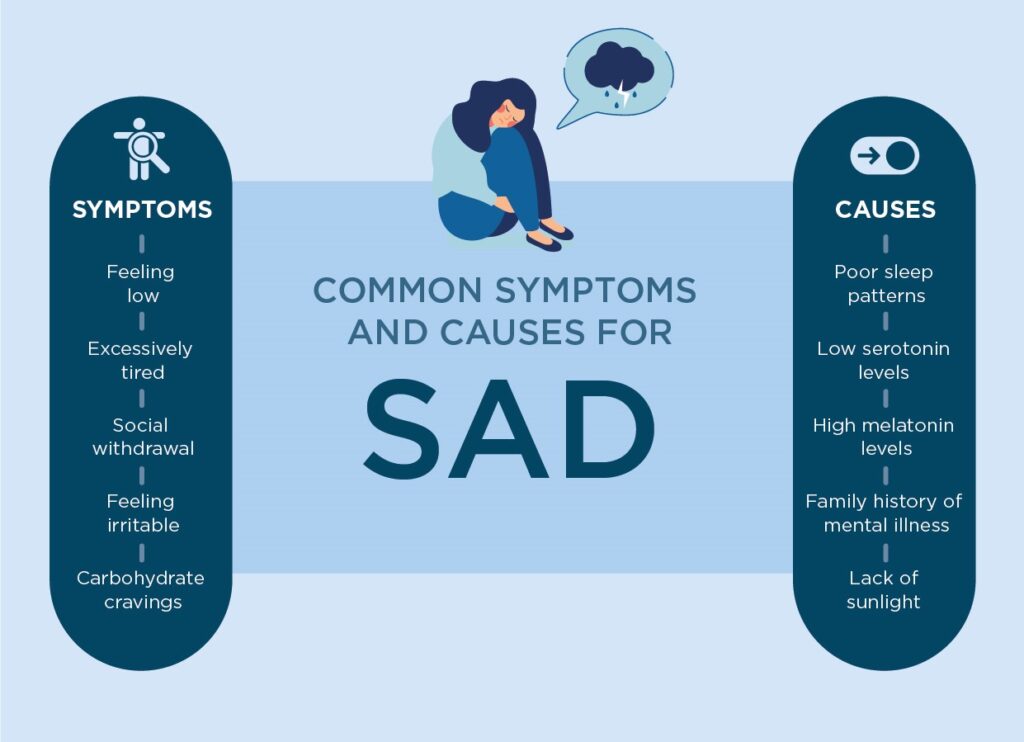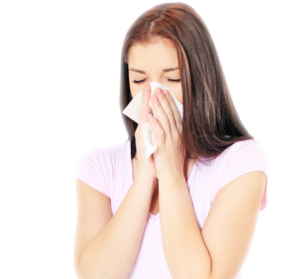
Winter means shorter days and longer nights! Many people often feel sad and experince mood swings during seasonal changes, especially in fall and winter. It’s a form of depression known as “SAD” ( Seasonal affective disorder). Such a disorder is not a serious medical diagnosis; it’s fairly common, mostly in women compared to men.
The main trigger for SAD is shorter days, i.e., less natural sunlight than summer. If you also notice significant changes in your mood and behavior whenever the season changes, then this might be the cause. So, let’s quickly discuss the symptoms and treatment of seasonal affective disorder.
What is the scientific reason behind this?
In the fall and winter seasons, reduced sunlight can disturb your body’s internal clock, i.e., Circadian rhythm. It’s a 24-hour master clock of our brain that responds to light changes (daylight and night dark) and regulates the cycle of alertness and sleepiness accordingly. During the day, your brain sends signals to various other parts to help you stay awake, ready, and respond. But at night, melatonin, a chemical produced by the ting pineal gland of our brain, helps you sleep. So, the shooter days in fall or winter can disrupt this natural rhythm and lead to SAD in many people.
Seasonal Affective Disorder Symptoms
SAD is not a serious disorder but a type of depression characterized by changes in seasonal patterns. Its symptoms usually last about 4-5 months per year, like how different seasons stay.
Surprisingly, very few people also observe the same disorder but in opposite patterns, usually in spring and summer. So, the list of seasonal depression symptoms of both are listed;
Fall and winter SAD
Symptoms specific to winter-onset, sometimes called winter depression or winter fall, have a look at them.
- Oversleeping
- Appetite changes
- Weight gain
- Tiredness or low energy
Spring and summer SAD
The summer onset seasonal affective disorder symptoms, also called summer depression symptoms, are mentioned below, have a read.
- Trouble sleeping (insomnia)
- Poor appetite
- Weight loss
- Agitation or anxiety
- Increased irritability
Causes of Seasonal Affective Disorder
- Research suggests that natural light (sunlight) controls the molecule level that maintains normal serotonin levels. For people with SAD, this function regulation is improper, so decreased serotonin levels reduce brain activity and make you feel low.
- The increased production of melatonin is another known cause of SAD. A hormone that controls the normal sleep-wake cycle and its overproduction increases sleepiness (already discussed above in detail).
The changes in the level of both result in a disrupted Circadian rhythm, which in revert no longer adjusts the seasonal day length change. All this leads to sleepiness, mood swings, and many behavior changes.
- Vitamin D deficiency has been shown to increase these problems as it is known to promote serotonin activity. Along with vitamin D consumption in the diet, the body produces it when exposed to direct sunlight. However, with less daylight in winter, vitamin D is reduced and reduces serotonin activity.
Treatment for SAD
- Light Therapy
As already discussed, the major cause of seasonal affective disorder is less natural light. So exposing the people to bright light can work great here. In this treatment, the person sits in front of a bright light box every day about 30-40 minutes. This will control the production of serotonin or melatonin in the body.
Note: The lightbox (10,000 lux) is about 20 times brighter than ordinary light. So, people with certain eye diseases must use alternative treatments.
- CBT- Talk Therapy
Cognitive behavioral therapy is aimed at helping people overcome this sadness and mood swings. It is typically conducted in 2 weekly group sessions for around six weeks to replace all those negative thoughts related to the fall or winter seasons. Also, various indoor and outdoor activities are conducted to spread the spirit of joy and josh.
- Vitamin D
To overcome these symptoms, try to eat more vitamin D-rich food or supplements; this will help you to maintain the level of melatonin and serotonin in the body.
Final Words
It’s okay to feel sad and low during the seasonal changes; you are not only the one; many face the same. Seasonal Affective Disorder symptoms are not a serious issue until they affect your overall health. If it does, then consult the psychiatrist for guidance.




